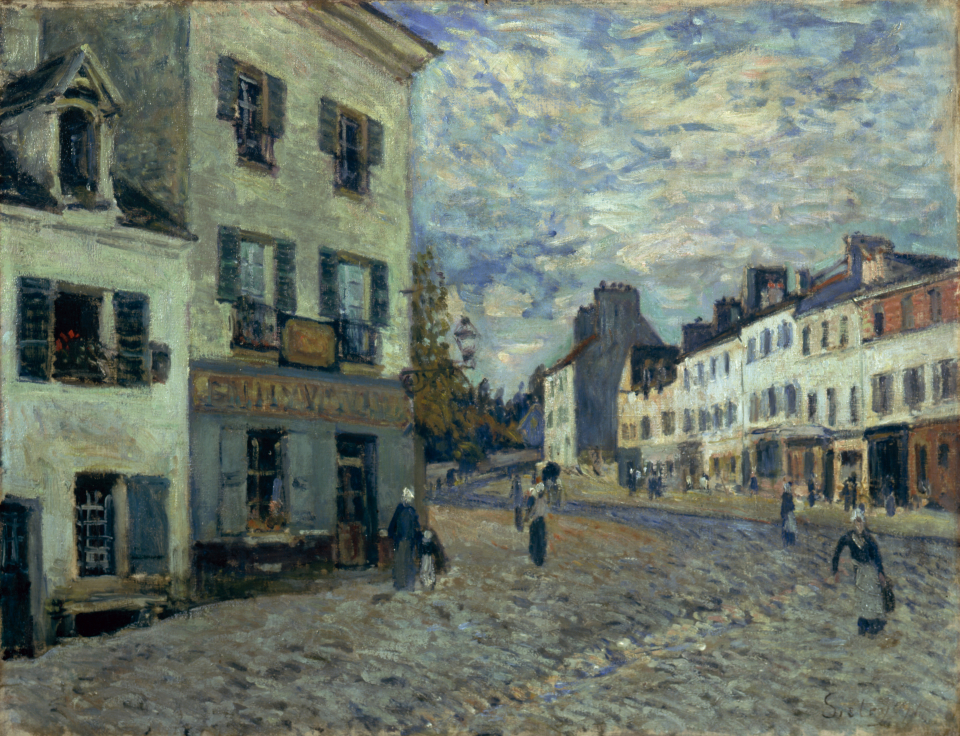Hector-Bau > Ebene 1 > Kubus 1
Intro
Between 1875 and 1877 Alfred Sisley lived in Marly-le-Roi, a small town approximately 20 kilometers from Paris. Like many of his Impressionist friends—he was in contact with Auguste Renoir (1841–1919) and Claude Monet (1840–1926), and also with Camille Pissarro (1830–1903)—Sisley frequently depicted everyday scenes from small-town life.
In »Une rue à Marly«, the street in the foreground leads us into the pictorial space by way of its zigzag course. The numerous figures in front of the two-dimensionally rendered houses are only sketches, with no further individualization. The artist has chosen instead to dissolve them, like the rest of the surroundings, in a harmonious play of color. With short, characteristic brushstrokes, he shapes the foreground in blue, white, and yellow tones beneath an unruly sky.
The flickering vitality of the scene is largely a product of this dynamic brushwork, while Sisley’s balanced use of color—blue and white nuances can be found in all sections of the picture—contributes to the tangible unity of his atmospherically charged view of Marly.
Kunsthalle Mannheim
Transkription
A street zigzags through Marly – and pulls our view into the depths of the painting. There are small and large houses on both sides of the street. In front of these buildings and dispersed across the scene, we discern some lightly sketched people. Alfred Sisley does not show individual details, however. It is also unclear what kinds of buildings these are. The corner house might shelter an inn on the ground floor. Perhaps those are shops on the right side of the street.
Scenes of daily life in small towns were a popular motif for the French Impressionists, and for Sisley as well. Alongside his friends Claude Monet and Auguste Renoir he created many outdoor paintings in the 1870ies. The outskirts of Paris offered a huge variety of motifs. The street in the painting we are looking at was situated in Marly-le-Roi. This town is some 20 kilometers away from Paris; Sisley lived there for two years.
In his painting he depicts an unnamed street at midday. His short, characteristic brushstrokes infuse the scene with a flickering vitality. The sky in particular appears very dynamic thanks to the detailed, agitated brushwork. This first impression of the painting is accompanied by a harmonic play of color. Sisley dissolves the surroundings into different shades of blue, white, and yellow. He thus achieves a unified yet dynamic view of a picturesque small-town street in the French countryside.
